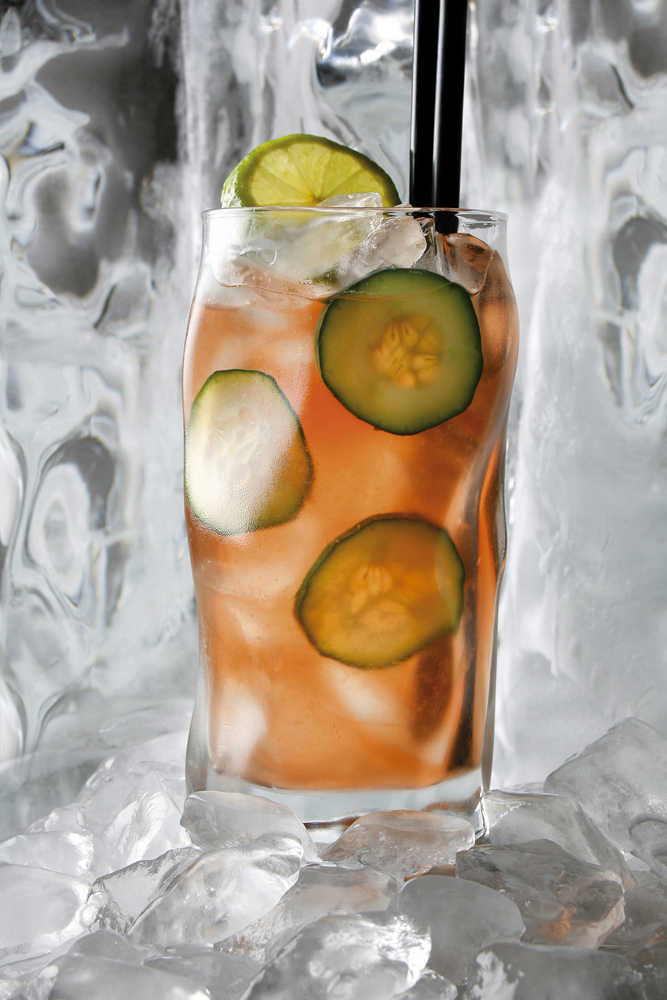Drink of the Week: The Vodka Martini
 So, this all started when, through the kindness of a smart and generous publicist working for Diageo, two bottles of very good vodka found their way to my door. Ketel One is the solid and very popular brand of premium liquor you probably all know, with its bright, clean taste. With a bit more complexity and bite than we usually associate with what was once marketed as “white whisky,” certified organic Moon Mountain Vodka, a small batch liquor, also came my way. Both are superior vodkas which, I’m certain, would do very well in any good vodka cocktail from a Bloody Mary to a Moscow Mule. Still, I decided to first enjoy them in probably their purest cocktail form, the vodka martini.
So, this all started when, through the kindness of a smart and generous publicist working for Diageo, two bottles of very good vodka found their way to my door. Ketel One is the solid and very popular brand of premium liquor you probably all know, with its bright, clean taste. With a bit more complexity and bite than we usually associate with what was once marketed as “white whisky,” certified organic Moon Mountain Vodka, a small batch liquor, also came my way. Both are superior vodkas which, I’m certain, would do very well in any good vodka cocktail from a Bloody Mary to a Moscow Mule. Still, I decided to first enjoy them in probably their purest cocktail form, the vodka martini.
Now, careful readers with long memories may recall that we covered the martini — both gin and vodka — in the first ever edition of DOTW. Nevertheless, we didn’t really give the vodka variation its proper attention as a sturdy cocktail in its own right. (Many will insist it’s not the same drink and they’re not half wrong.) Today, we correct that oversight with, really, the first cocktail that ever became “my” drink and only partially because I grew up with James Bond on the brain. You’ll note that we’re using significantly less vermouth this time around.
The Vodka Martini
3 ounces vodka
1 teaspoon to 1/2 ounce dry vermouth
1 dash of orange bitters (optional)
Lemon twist or olive garnish
Combine vodka and a tiny, or teeny-tiny, amount of vermouth in a cocktail shaker. Also consider throwing in a very small amount of orange bitters. This may be heretical in some quarters, but we like our vodka martinis seriously cloudy with ice crystals, especially since we’re keeping the vermouth to a minimum this time, so all of these liquids should be poured over crushed ice, if you can manage it. Then shake like crazy for as long as you can stand to. Strain into a chilled cocktail glass with olives or a twist of lemon, though we prefer olives. Sip slowly, this is essentially two drinks in one. (Use 100 proof vodka only at your own risk.)
****
I have to admit to some small consternation when trying this at home that I never quite reached the level of smooth perfection that my very longstanding and extremely good friend, hostess par excellance Dr. R., achieves regularly with her vodka martinis. Apparently, however, her secret involves using just a smidge of olive brine, which technically makes her drink a dirty martini.
I love dirty martinis and I’m sure I’ll cover them at some point later on, but that doesn’t mean you have to wait. Apparently, her trick is to just use a drop of vermouth, and a touch of brine and lots and lots of crushed ice — and no bitters. I like my version but, I have to admit, her’s is pretty damn perfect.
As for which brand of vodka worked better…that depends. The Moon Mountain is better for those who really like to know they’re imbibing alcohol while being kind to the environment, while the Ketel One is slightly preferable for those who’d like to pretend they’re drinking an intoxicating iceberg.
You can follow us on Twitter and Facebook for content updates. Also, sign up for our email list for weekly updates and check us out on Google+ as well.

 Summertime weather has kicked into high gear much earlier than usual in the greater Los Angeles area and it’s hot as we write these words at Drink of the Week Central. So, it’s as good a time as any to celebrate an appropriately cold and refreshing, and actually perfectly delightful, semi-
Summertime weather has kicked into high gear much earlier than usual in the greater Los Angeles area and it’s hot as we write these words at Drink of the Week Central. So, it’s as good a time as any to celebrate an appropriately cold and refreshing, and actually perfectly delightful, semi-








